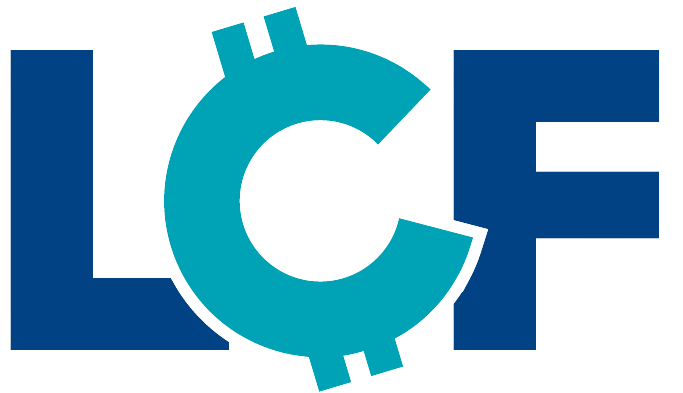How to Obtain a $500K Small Business Loan
Lets Get Started
Getting a $500,000 small business loan requires a little planning on the part of the borrower. There are several steps small business owners need to take to obtain a business loan as large as half a million dollars, or more. To receive such a substantial loan amount, you’ll need to make sure you’re explicitly aware of what’s expected of you as a borrower, how you want to use the money, how much it’ll cost, and your different options for getting such a sizeable loan. While there are several types of loan that can reach half a million dollars, choosing the right one will help ensure you’re able to repay on time and grow your company.
Keep in mind, different lenders have varying loan amount that they service. So to begin, make sure your speaking with the right lender. There is no point filling-out a loan application if the financial institution does not service that size loan amount. Like home mortgages, business loans are categorized into loan amounts. There are even different programs offered by the U.S. Small Business Administration (SBA) that cater to borrowers of larger amounts.
Why Do You Need a $500,000 Business Loan?
No matter which type of business funding you decide to go for, most lenders will want to know exactly why your company needs such a substantial loan. It’s important to remember that lenders are risk-averse establishments looking to write loans to the businesses most likely to repay them. So when you’re going through the application process, you should do everything in your power to prove your company’s creditworthiness.
Show lenders your capital needs in your business plan. Your business plan should show potential lenders exactly what your business is about. A good one tells readers what your company makes or does, how it fits into its market and even a description of its leadership group. You will likely include your marketing plans and an explanation of your business’s legal structure. On top of all that, you’ll need some hard numbers. If your business is more established, you’ll include data on how it’s been doing. No matter the company’s age, you’ll also include projections and expectations of how it will do in the next few years and justifications for all of those projections. Finally, be prepared to show how a loan will help you sustain or grow your business.
Ensure that your documents are organized and correct. After you’ve carefully written and revised your business plan, you’ll need to make sure the rest of your documents are correct, organized, and ready for application. Those documents include your income tax returns along with your business’s tax returns. You’ll need your balance sheets, bank statements, and cash flow projections. Finally, you’ll need to include some legal documents: your articles of incorporation (if you’re operating a corporation), any of the licenses your business requires to operate, your lease, and any ongoing accounts payable or receivable. Having all of these documents available, accurate, and organized will make the process of seeking out a substantial loan flow much better.
Investigate your credit history. One notable document not listed above is your credit report. Your credit score, sometimes including your personal credit score, is a primary determining factor for many forms of loans. There are three main business credit reporting agencies: Dun & Bradstreet, Equifax, and Experian. Each agency’s credit rating is slightly different, but all of them use similar data points to calculate your score. Those data points include your history of making payments on existing debt, the size of your company, the age of your credit history, how much debt you have, how much you’ve drawn on any existing lines of credit, and your business’s industry. Go over your credit report. Is everything on it correct? If not, you’re able to file appeals and otherwise make corrections. It’s a good idea to dispute any incorrect information prior to submitting your loan application.
Double-check your eligibility. The last thing you want is to discover that after all of your document preparation and business plan writing, you’re denied a loan based on missing basic eligibility criteria. Some loans will require multiple years of a particular level of monthly income, while others are not offered for particular industries.
What Types of Small Business Financing Are Available for $500,000
Term Loans
Term loans are, at their most basic, exactly what you think of when you consider a small business loan. The borrower is given a lump sum of money, in many cases up to and over $500,000, and an interest rate.
Monthly payments begin immediately and are typically the same size each month. Lenders often use interest rates and other mechanisms to protect themselves from losing money on such a large loan. You may be asked to make a personal guarantee, putting your personal assets and credit score on the line in case of default. Repayment terms on such a large loan will last for years, but paying back a loan early can reduce the total amount you pay in interest.
There are two main types of simple term loans: long and short-term loans. Long-term loans tend to be larger with lower interest rates and can take many years to repay. These long-term loans are best suited for huge purchases: real estate, massive equipment, etc. Short-term loans, on the other hand, often require payment within just a few months and often involve smaller loan amounts at higher interest rates. if you’re looking for a $500,000 loan, you’re going to want to look more toward long-term than short-term loans.
While the qualifications can be strict, term loans are often flexible for borrowers. As long as you’ve shown the reasons why you need this loan and how you intend to use it, that loan can be used to buy equipment, rent space, acquire another business, or even function as a working capital loan.
Equipment Loans
Equipment loans, or equipment financing, is a specialized financing option meant specifically for buying equipment. In some industries and situations, that equipment can easily approach or exceed half a million dollars. More so than other forms of lending, equipment loans are often available to new businesses in need of equipment because of their collateralized nature.
With equipment financing, the lender finances the majority of the price of equipment (outside of a down payment made by the borrower) and then holds that new equipment as collateral. That collateral requirement means that the lender is protected from undue financial risk – if the borrower should for any reason default on the loan, the lender can repossess the equipment and sell it.
Equipment loans can also be used for other equipment needs beyond buying something brand new. You can buy, rent, or lease equipment. You can also upgrade, replace, or repair existing equipment that’s been outdated, broken, or damaged.
For some industries, like the transportation industry, equipment is a huge part of what makes a business work. If you aren’t able to afford a few trucks, you’re not going to make much money in trucking. So if your primary reason for seeking out a loan is a piece of equipment, you may want to look into equipment financing as a primary funding option.
SBA Loans
The United States Small Business Administration (SBA) guarantees some loans given out by third-party financial institutions. These guaranteed loans are called SBA loans.
In a traditional term loan, the lender faces considerable risk. After all, if the borrower fails to repay a loan, that’s a full-on loss for the lender. The high interest rates, collateral, and other features that come with large loans are all ways that financial institutions protect themselves against that loss.
In SBA loans, the federal government provides that protection. There are two very common forms of SBA loans: there’s the 7(a) loan program, and there’s the 504 loan program.
SBA 504 Loans are specifically intended for big purchases. In particular, if you’re looking to put a lot of money into real estate or equipment, you may find that you’re the right borrower for an SBA 504 Loan, which can be as large as $5 million. 504 Loans are specifically meant to be used for buying real estate, new facilities, or long-term equipment along with updating an existing facility or certain infrastructure.
7(a) Loans are by far the SBA’s most popular form of funding. 7(a) loans can be as large as $5 million as well and have a few more uses than 504 Loans. Instead of the focus on real estate, equipment, and infrastructure that come with 504 Loans, 7(a) loans can be used as working capital, as equipment financing, to pay employees, or even to refinance existing debts. You’ll need to put up collateral for loans over $350,000, but these loans are likely the least you’ll pay for funding.
With both forms of SBA loans listed here, remember that the government guarantee that makes the loan so affordable has a secondary effect: lenders will be even more selective about the companies receiving these loans. After all, the SBA doesn’t want to waste taxpayer dollars on unqualified businesses. It can be difficult to qualify for large SBA loans as a startup, for example. That’s because your business credit score is likely to be low and you don’t yet have proof of sustained revenue.
Most SBA loans will have stringent requirements for the companies receiving them, and the process can take a while: don’t expect to get an SBA loan if you need your funding quickly. If you do qualify and are able to be patient on your funding, SBA loans can be one of the less expensive forms of funding.
Business Lines of Credit
On the other hand, it can sometimes be helpful to have your business financing ready and waiting at all times. For that, many small business owners opt for a business line of credit.
Whereas most loan options involve receiving a lump sum of the loan amount directly into your company’s bank account, business lines of credit involve a financial institution or online lender offering your company a particular credit limit. You’re able to draw on that line of credit as needed, and you’ll only pay interest (and make payments) on the money you’ve spent.
If your company has good credit, a history of revenue and valuable collateral, your line of credit can stretch up into the hundreds of thousands of dollars. And unlike traditional loans, if you pay back a portion of your line of credit, you’ll be able to draw it again, not unlike a business credit card.
Lines of credit can be used in a wide variety of ways. You can pay rent, sustain working capital during slow periods, pay wages, buy inventory, or even take on marketing initiatives.
Merchant Cash Advance
Finally, there are merchant cash advances (or MCAs). The biggest key difference between an MCA and some of the other types of lending discussed above is that MCAs aren’t loans. They don’t involve interest rates, the application process is completely different, and they’re not governed by the same rules that loans are governed by.
Instead, MCAs are transactions. The MCA provider isn’t lending money – they’re buying something. That something is a portion of your company’s future credit and debit card sales.
It works like this. Let’s say you receive a merchant cash advance of $300,000. You might be required to pay 10% of each transaction back toward that advance total. If your company makes $20,000 one day, you’re paying $2,000. As sales grow, payments grow. And vice versa.
MCAs also have a firm repayment amount, calculated by using a factor rate. Factor rates, typically between 1 and 2, are multiplied by the size of the advance. The product of those two numbers is the total repayment amount. If that $300,000 advance comes with a factor rate of 1.2, you’ll repay $360,000.
One additional positive with MCAS: because repayment depends more on annual revenue than your credit history, it’s very possible to get a substantial MCA with bad credit. Your history of repaying loans matters less to MCA providers than the quantity and volume of your credit card transactions.
Unlike an equipment loan or other types of business lending, cash from an MCA can be spent on a wide variety of business needs and they fund quickly. Many MCA providers are able to get you your cash within a single business day.
But that flexibility and speed come with a cost. MCAs can be among the priciest forms of funding, particularly if they’re paid back quickly. And since you have no power over the size of each payment, you have no control over the annual percentage rate (APR) of your cash advance.




